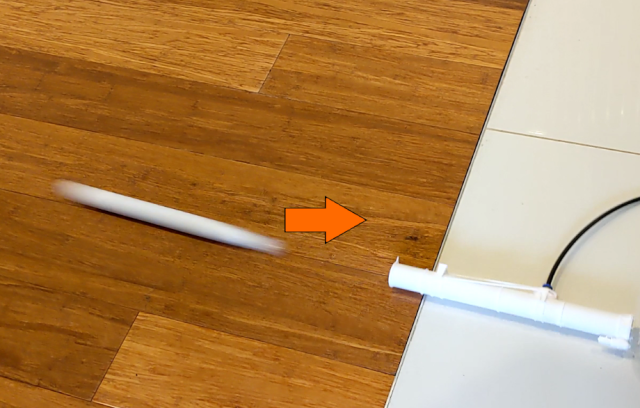The Torpedo Launcher
It's taken me a while but I have a finished the torpedo launch system for operational torpedoes launched from torpedo tubes, this system uses compressed air from an on board compressor or air from an on board tank.
I have tried various methods over the years to generate the necessary force to move the torpedo out of it's tube and I have some scars to prove it, I still have all my fingers and both eyes still work reasonably well so I have erred on the conservative side, ditching such things as high pressure CO2 cartridges as just too dangerous!
80-100 PSI compressed air does a great job of launching a 20th scale torpedo, as long as the torpedo fits the tube reasonably well.
In January 2024 I experimented with a one litre polycarbonate "milk" bottle as a compressed air storage tank after making up a couple of circles of acrylic and glueing them into the bottle top with an air hose fitting screwed into it. My logic for trying this is to eliminate the compressor and also as I usually stuff a couple of empty Coke bottles inside the hull for "just in case" and hopefully stop the boats from sinking, I figured if they are full of compressed air instead they will still perform that function!
So anyway, the second time after I let the glue dry properly, the bottle held 100 PSI without blowing out the new cap! I tried this with the bottle connected to a long air hose and inside 5 woven shopping bags one inside another, 5 times and the outer one having a zip top!
This worked perfectly and I am able to launch 12 torpedo's with one litre of 100 PSI compressed air, so success, I can eliminate the compressor and the pressure regulator in the controller and the connector for the compressor.
So then I thought, I wonder if there are any commercially available, lightweight, maybe cabon fibre, 100 PSI or better air tanks? And I found a range of them available for paint ball guns, in various sizes from 48 cubic inch (0.7 litre), 68 cubic inch (1.1 litre) and upwards and these can handle much, much higher pressure, these vary in weight depending what they are made of but I have found a 48CI which weighs about 1 pound or half a kilo! I got to get one of those to try!
Below is the circuit of the launch controller that I have produced. and below that is the layout diagram for the printed circuit boards that I just had made (May 2021). I have spare printed circuit boards available if anybody wants one!
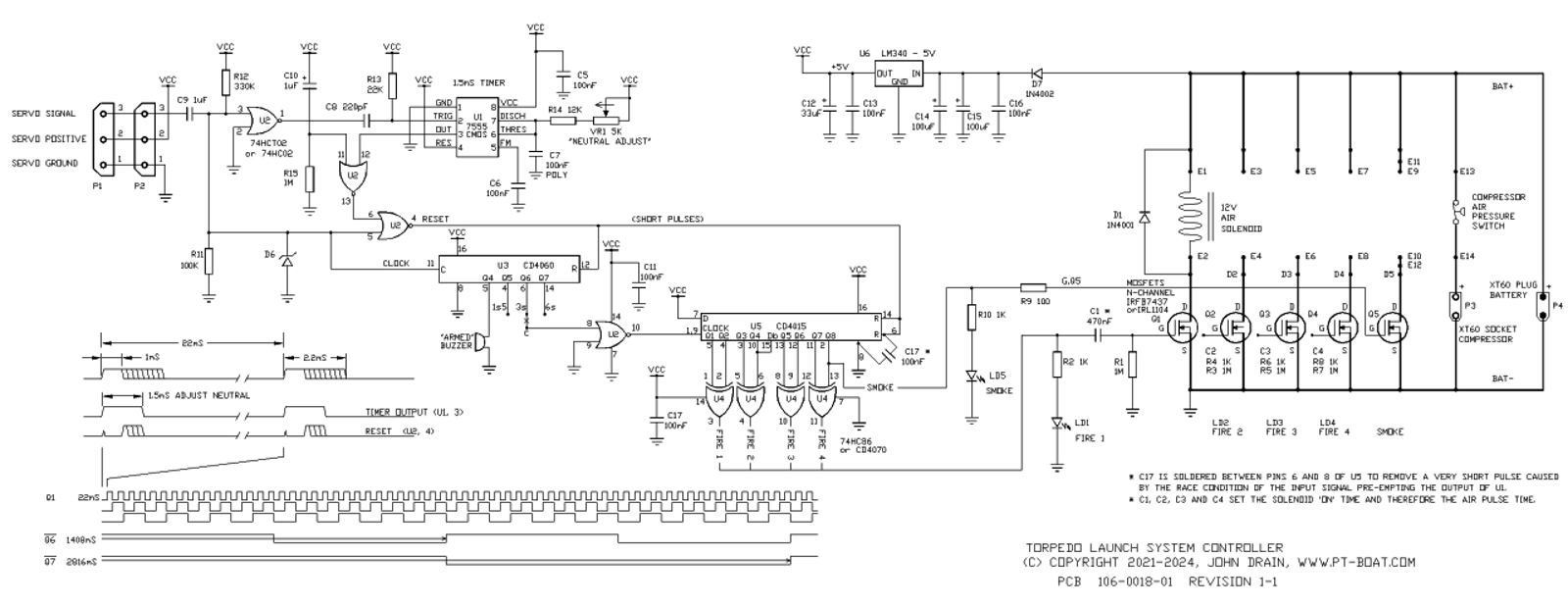
I have updated the circuit slightly (2024) to fix a couple of errors and to show C17 directly connected between U5, pins 6 and 8 as it doesn't have a position on the printed circuit board, it was added later to fix a glitch.
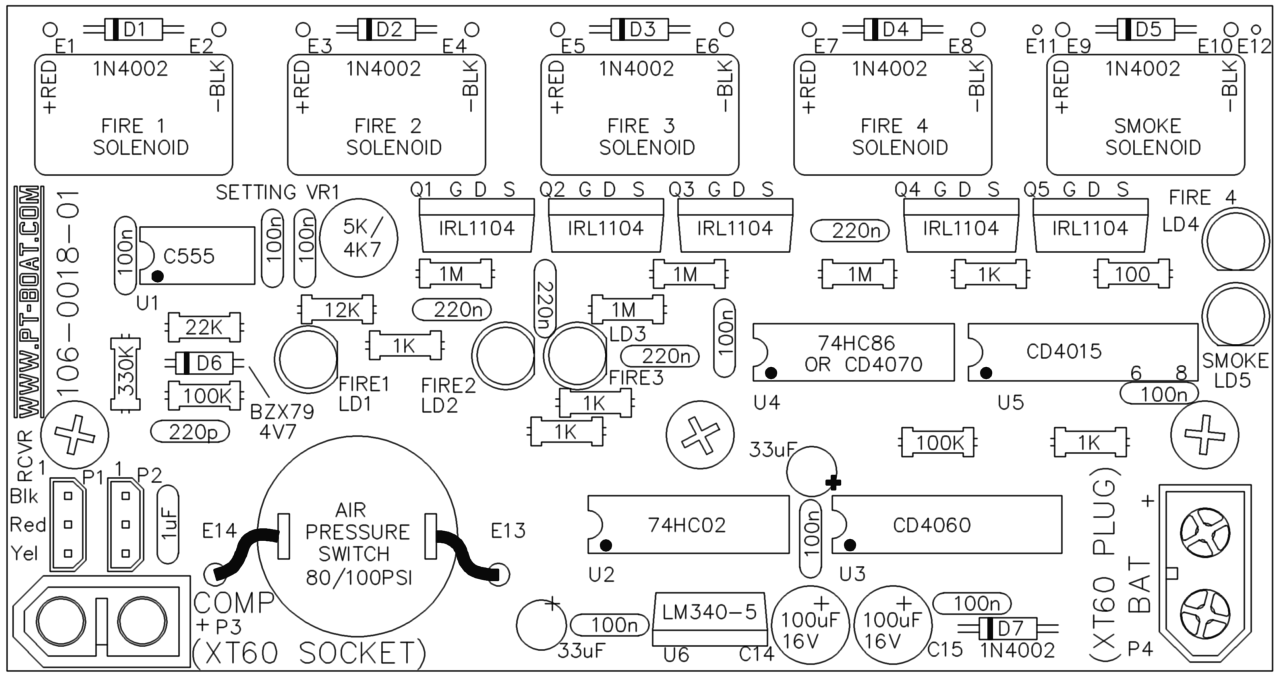
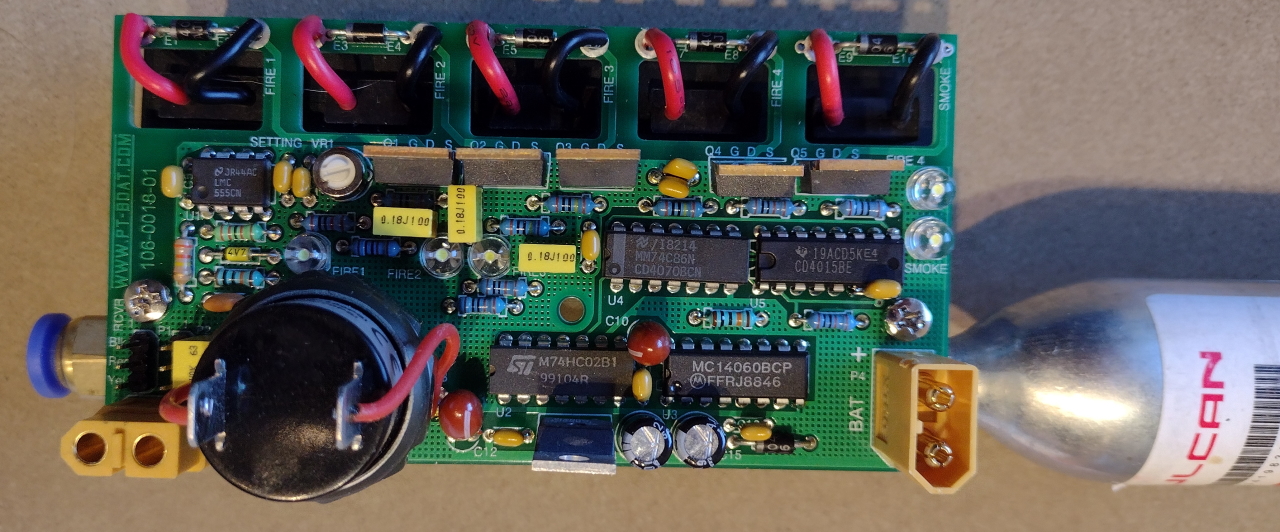
The battery is connected to the XT60 plug connector at the right side, the compressor is plugged into the XT60 socket connector to the left. above the left connector is a couple of connectors in parallel which connect to the receiver, there are two connectors so that the receiver channel can also plug into something else if desired. The large round thing to the left is a pressure sensor switch that controls the compressor and maintains the 80 or 100 PSI pressure in the tank. You can also see C17 soldered to pins 6 and 8 of the CD4015 near the screwhead on the right hand side.

The CO2 cartridge to the right of the picture is empty and is used as a compressed air tank to give sufficient volume of air to fully launch a torpedo.
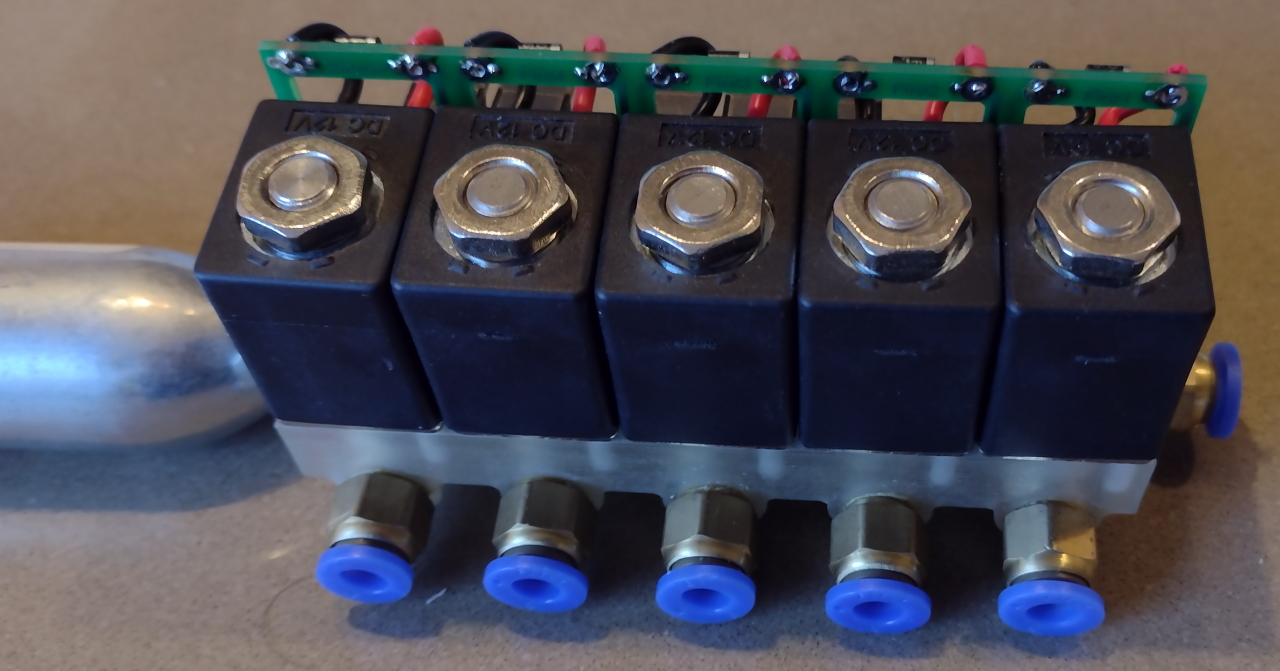
I have used commonly available solenoid coils but without the usual aluminium bases which have been replaced by a common 3D printed air manifold that interconnects all five solenoids, five outlets, the air pressure switch, the air inlet and the empty CO2 cartridge thread.
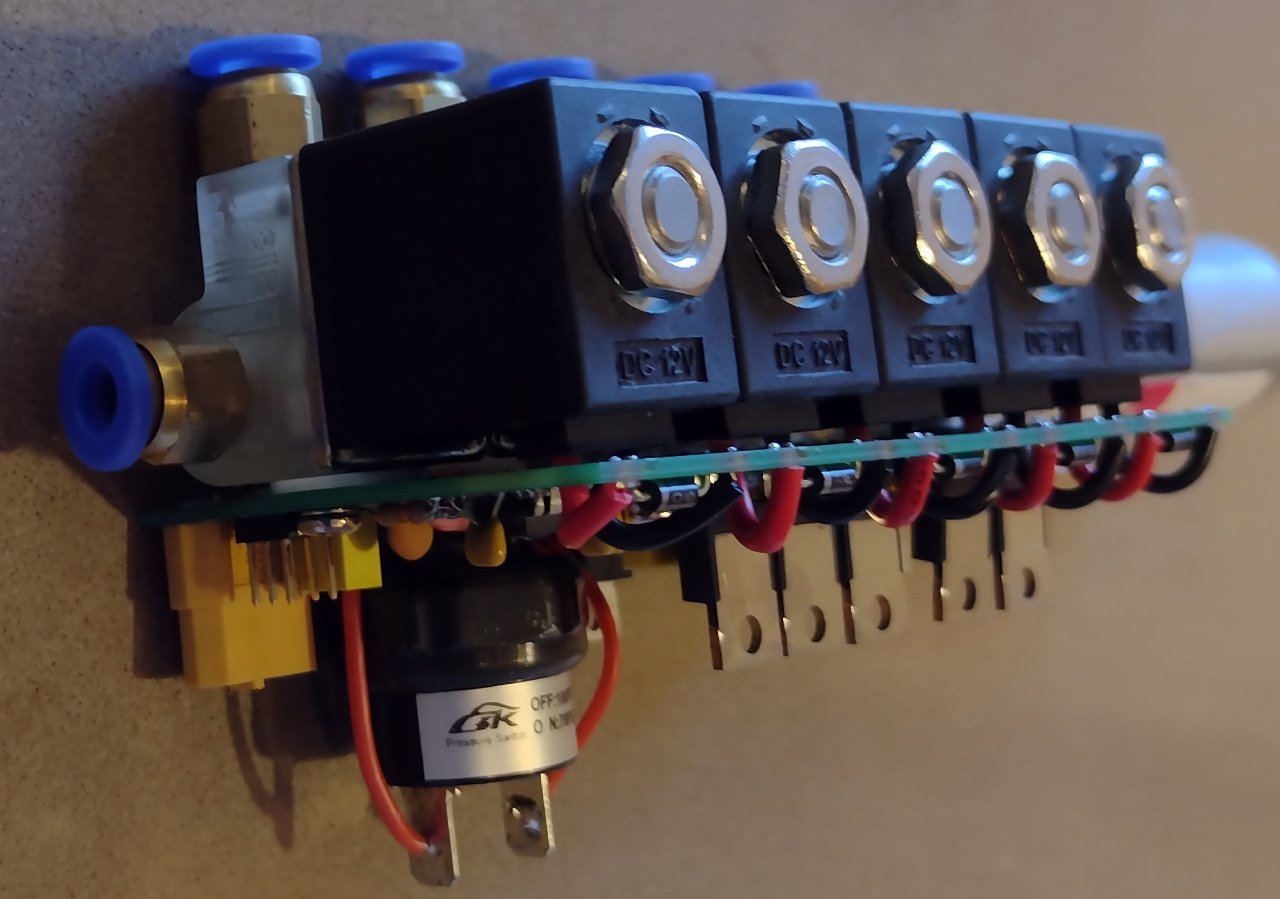
The circuit for the launcher uses discrete cmos logic and is a sequential controller that can fire four separate torpedoes and then also feed air and power to the smoke generator.
The circuit measures the input signal from the radio control receiver, if the PWM signal width is short (~1mS) both the counter and shift register are continuously reset by the input pulses, every ~22mS or so, this ensures that the circuit cannot misfire, when the input signal width gets above the set time (~1.5mS and adjustable) the counter starts to count using the input pulses until Q6 goes through a complete cycle (around 1.5 seconds), this output then clocks a logic 1 through the shift register from the D input, when Q1 and Q2 are different (Q1 has gone high but Q2 hasn't yet) the XOR gate fires the first mosfet "Fire 1" then this cycles through "Fire 2", "Fire 3" and "Fire 4 at about 1.5 second intervals between. Once Q8 goes high the last mosfet "Smoke" is continuously turned on so that smoke can be "made" for as long as desired.
At any point if any of the receiver PWM signal pulses drop below the set minimum (~1.5ms) the whole circuit resets to the starting state!
So you can use a switch on the transmitter or you can use a linear control on the transmitter, whatever you have available, to operate the circuit. You can also stop at any stage, say just "fire 1" and then stop, then you can start again at any time, this will try to launch torpedo 1 again but there is no torpedo in the tube any more so just a puff of air and then proceed to "fire 2".
The launcher in operation.
This video also shows a fully operational 1/20th scale USN Mk8 torpedo being launched from an Elco 1/20th torpedo tube, these are made in a nylon type material for strength. The body for the torpedo and the torpedo tube and parts are on my shapeways shop - https://www.shapeways.com/shops/pt-boat
The compressor is just the compressor, the motor and the four LIPO batteries removed from an automated tyre pump unit, with XT60 connectors fitted to plug into the launcher board. The batteries power the compressor and the launcher board and the launcher board can also power the receiver. The launcher has a 5 port air manifold, again from my shapeways shop, made in high resolution "fine detail" plastic to get a good air seal on the air solenoids, the nylon type material doesn't work for this application as the surface finish is quite rough so the air solenoids don't seal very well and the compressor runs almost continuously. There is also a 3 port manifold for the Schnellboot as it can only launch two torpedoes and make smoke.
